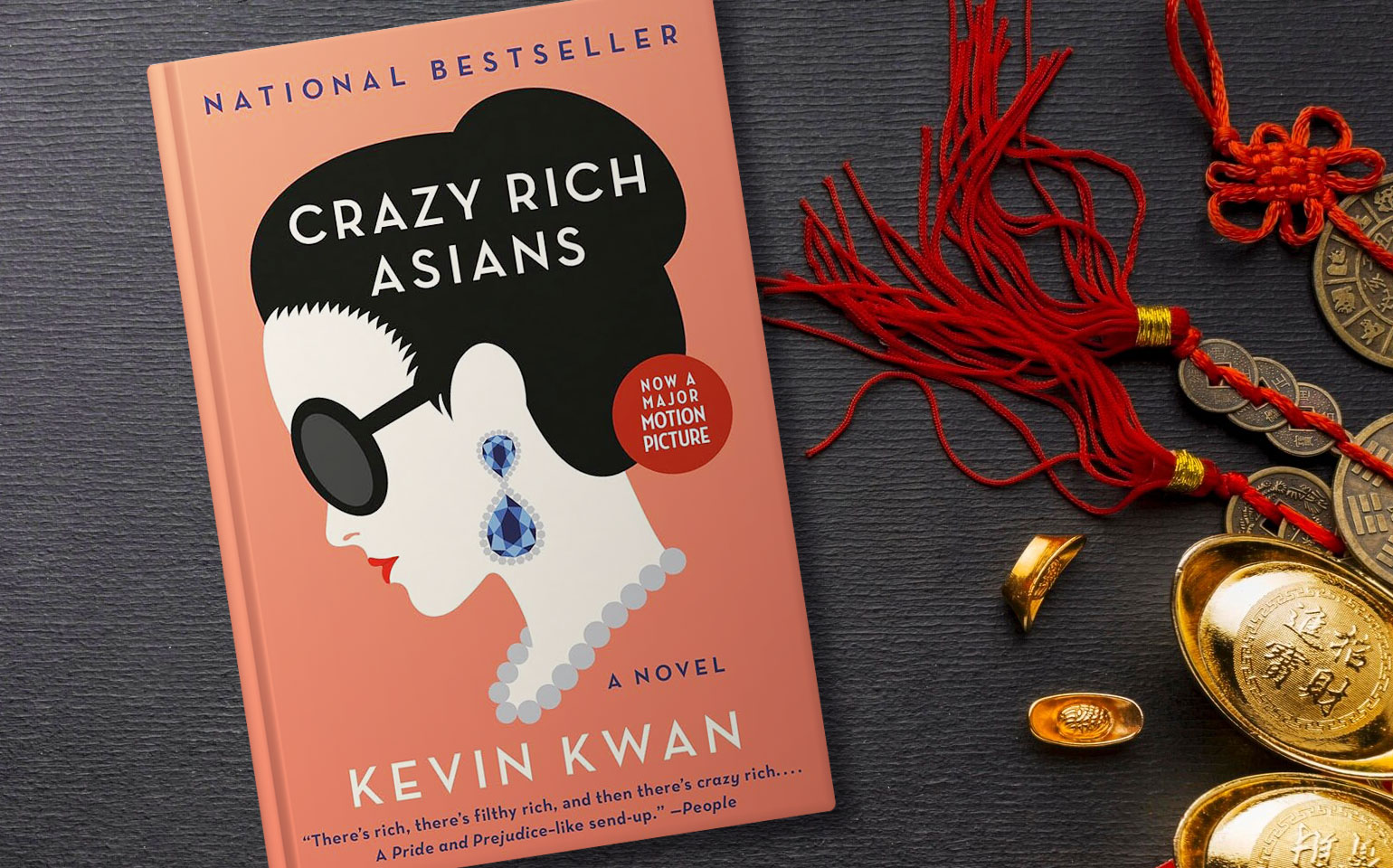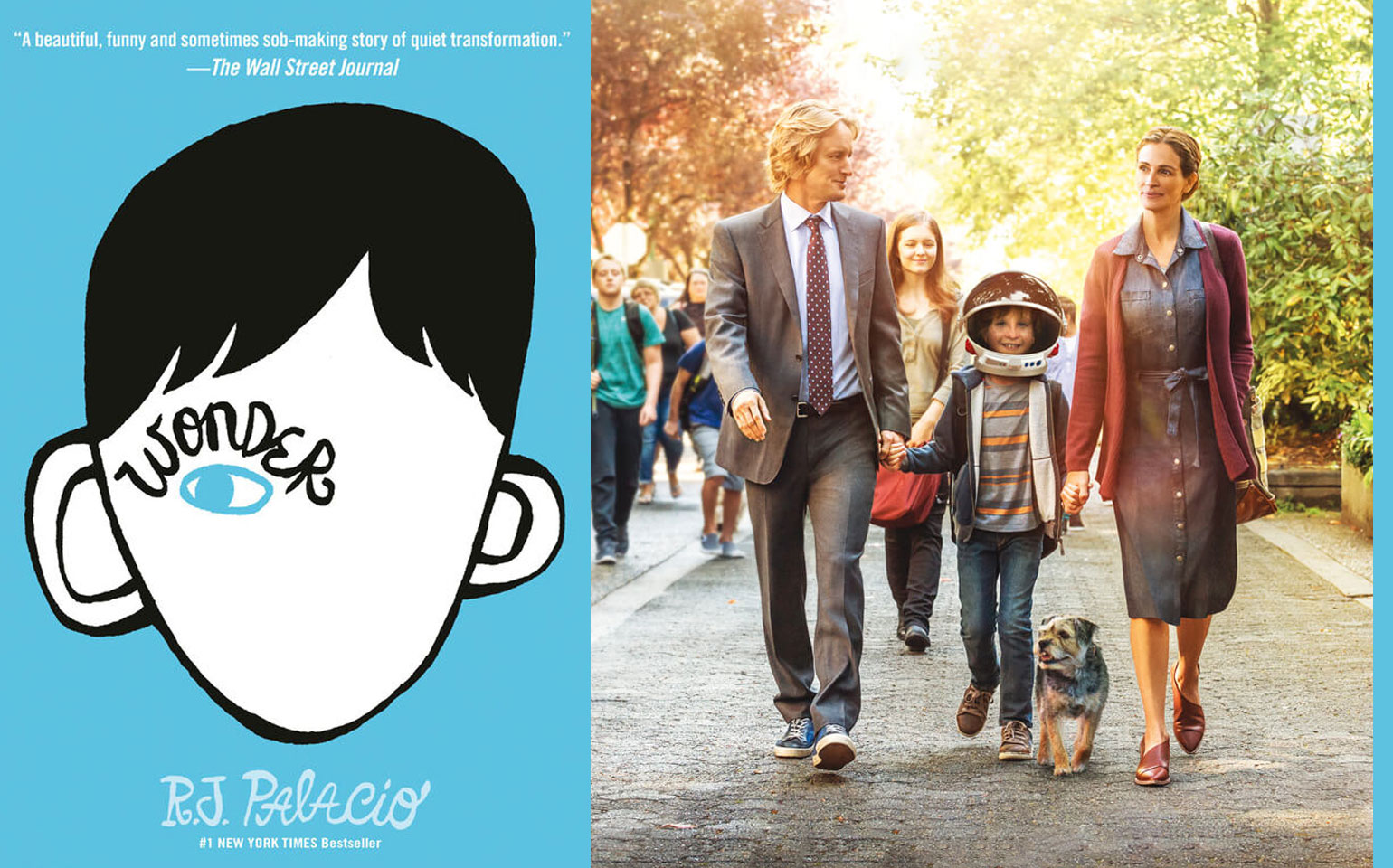
“The Only Thing Crazier Than Love is Family”: Crazy Rich Asians the Book vs. the Movie
When New Yorker Rachel Chu agrees to spend the summer in Singapore with her boyfriend Nicholas Young, she envisions a humble family home and quality time with the man she hopes to marry. However, Nick has failed to give his girlfriend a few key details. One, his childhood home looks like a palace. Two, he grew up riding in more private planes than cars. Three, he just happens to be the country’s most eligible bachelor. On Nick’s arm, Rachel has a target on her back the second she steps off the plane. Her relaxed vacation quickly turns into an obstacle course of old money, new money, nosy relatives, and scheming social climbers.
Author Kevin Kwan published his book Crazy Rich Asians in 2013, intending to “introduce a contemporary Asia to a North American audience.” The novel became a huge hit, leading Kwan to expand it into a trilogy: China Rich Girlfriend, which was published in 2015, and Rich People Problems in 2017. The popularity of the series led to the release of the Crazy Rich Asians movie in 2018, which became a worldwide hit and greatly influenced Asian representation in Hollywood.
I have always adored the Crazy Rich Asians franchise, but as with all book-to-film adaptations changes had to be made to the story to fit the new medium. This includes details in the book being removed, like explanations on Hawkers Centre, or the use of Asian slang. In this article, I will discuss the major differences between the two stories.
The length of Rachel’s trip to Singapore
In the novel, Nick invites Rachel to join him in Asia for the entire summer, with his best friend Colin’s wedding being only the first event on their trip. This gives Rachel more time to interact with Nick’s family while showing off the luxuries of high society and exploring Asia. In the film, everything is shortened into the span of spring break, creating more urgency for Rachel to make a good impression on the Youngs.
Rachel Chu and Eleanor Young
Nick’s mom Eleanor Young strongly disapproves of Rachel. She believes Rachel’s humble background makes her both a gold digger and a potential embarrassment to their wealthy family, unlike Nick’s previous girlfriends who came from the same wealthy circles. Because of this, Eleanor constantly tries to sabotage their relationship over the course of the story. Eleanor is much more subtle in the book than in the film, constantly digging for something she can use against Rachel. This contrasts sharply with Rachel, who has a close relationship with her own mother and believes a strong relationship with Nick’s parents will help their own. Rachel is mostly ignorant of Eleanor’s plotting because of Eleanor’s deceptive politeness and sparse contact with Rachel. This puts Nick between a rock and a hard place, because he loves both women and is torn by the conflict between them. The book does not clarify how their conflict turns out, leaving it largely unresolved.
On the other hand, the movie wraps things up in a neat bow for the audience. Rachel stands up for herself through a game of Mahjong, Nick decides to choose Rachel, and Eleanor ultimately accepts her.
Both the book and the movie portray Rachel as an economics professor, but the movie specifies her as one that specialises in game theory, setting up more backstory for her final conflict later. Eleanor meets Rachel much earlier in the movie and plays a much larger and more active role in trying to dissuade her from dating Nick. Eleanor is more openly disdainful of Rachel and focuses on making her feel bad, so that she leaves Singapore on her own. The movie also elaborates more on how much Eleanor sacrificed for a place in the family, comparing it to how little Rachel can do in comparison.
The Proposal
Another difference between the book and movie is how Nick proposes to Rachel. The movie had him propose twice and the book only has him do it once. In the movie, he proposes while in Singapore but she rejected him because Rachel knows that if she marries Nick, he will still forever be unhappy with his distance from Eleanor. This rejection sets up the final conflict with Eleanor before Rachel returns to New York. She invites Eleanor to play Mahjong, which Rachel purposely loses and abruptly leaves mid-game, symbolising her willingness to give Nick up for the sake of his family. This leads to Nick’s second proposal, dramatically chasing her onto the plane (with his mom’s approval), where Rachel accepts, creating a picture-perfect happy ending that feels satisfying for cinema. While in the book, the proposal is much more normal, and Rachel accepts the first time.
After reviewing both pieces of media, I preferred the movie proposal with all of its theatrics and the closure it provides for the relationship between Rachel and Eleanor. This final conclusion added some interesting details to the movie that I enjoyed.
Peik Lin and the Youngs’ popularity
Peik Lin is Rachel’s best friend from college who lives in Singapore. In the movie, Peik Lin and her whole family are stunned when Nick’s name is mentioned. Unlike in the book, where she has no idea who Nick’s family is, as the Youngs are more secretive about their status. Peik Lin is played by Akwafina in the film, who makes the character much funnier and more light-hearted, whereas in the book Peik Lin is down to earth. Peik Lin’s father is much colder and nosier in the book when it comes to wealthy people. As a result, he immediately investigates the Youngs, who he’s never heard about.
Astrid and Michael
“She wasn’t a rebel, because to call her one would imply that she was breaking the rules. Astrid simply made her own rules.” – Astrid Leong (Kwan 188)
In both formats, Nick’s cousin Astrid is trying to salvage her failing marriage to her husband Michael. Astrid discovers a text implying that Michael is having an affair and confronts him about it. The movie seems to have made the affair real, simplifying her story and ending with her leaving him with her son Cassian.
In the novel their story is much more complicated. As it turns out, Michael was staging the affair in an effort to escape the pressure and constant humiliation over not being from a wealthy family while attempting to protect Astrid’s reputation.
While I understand Michael’s reasons in the book, I feel that his attempts are very misguided and ended up doing more harm than good. Some chapters follow Astrid’s point of view, highlighting her denial and heartbreak towards Michael’s actions. This allows us, as the readers, to see what’s going through her mind and better fleshes out her character, allowing us to empathise with her more. The movie’s portrayal on the other hand is a lot shallower due to the limited screen time, to the point where I’m surprised they included it at all.
Conclusion
Overall, while both the Crazy Rich Asians book and the movie adaptation share the same story, they are different in noticeable ways that shape the narrative and character dynamics. The book overall has a more detailed exploration of the characters’ backgrounds, rich personalities, and complex relationships.
The novel is also filled with many interesting details and explanations that add to the flavour of the experience, such as the emphasis on Singapore’s food, culture, and upper-class lifestyle.
However, the movie is innovative and exciting in its own way. It focuses primarily on the romance between Rachel and Nick, adding new scenes and its own quirks like the timing of Rachel’s trip, the specifics of her profession, and a larger role for Eleanor.
Both iterations bring audiences through the same roller coaster search for love, family, and finding oneself. Past the extravagance and glamour, Crazy Rich Asians demonstrates that rich people have relationship problems like the rest of us—just wrapped in very expensive packaging.



